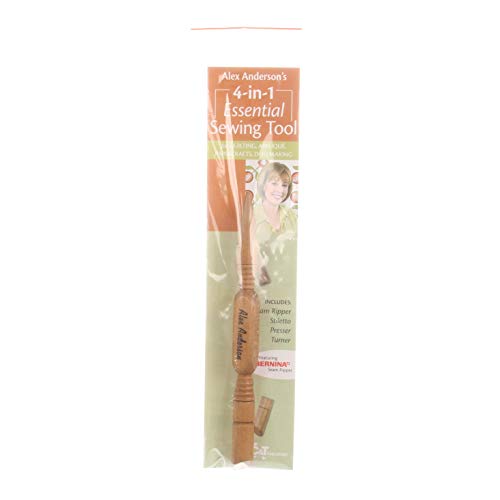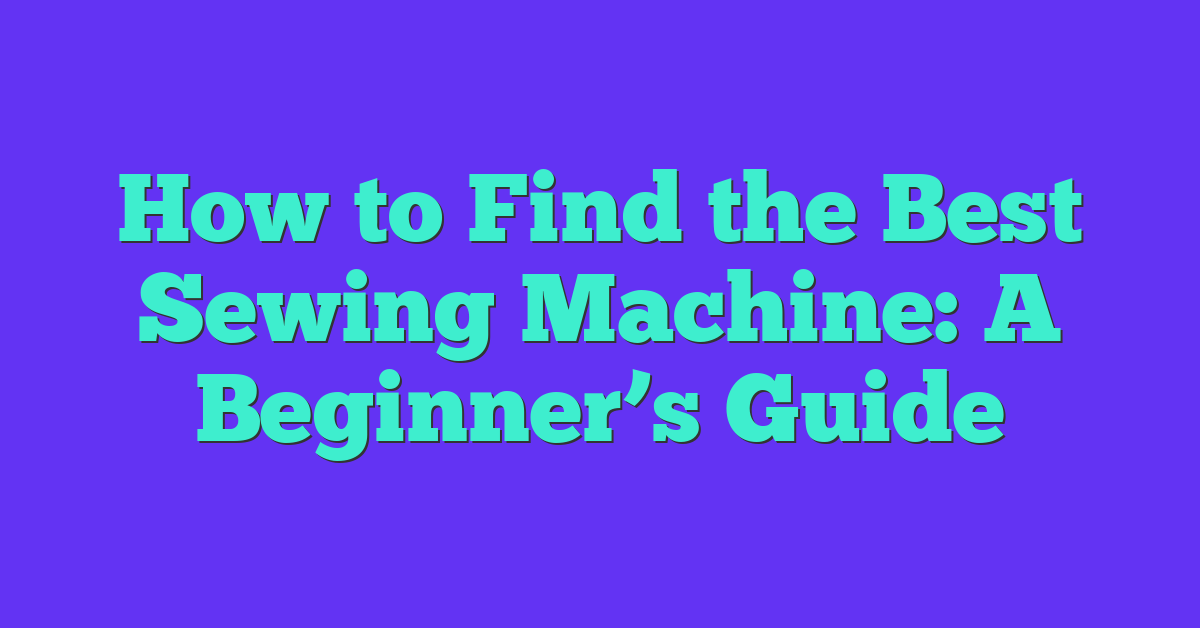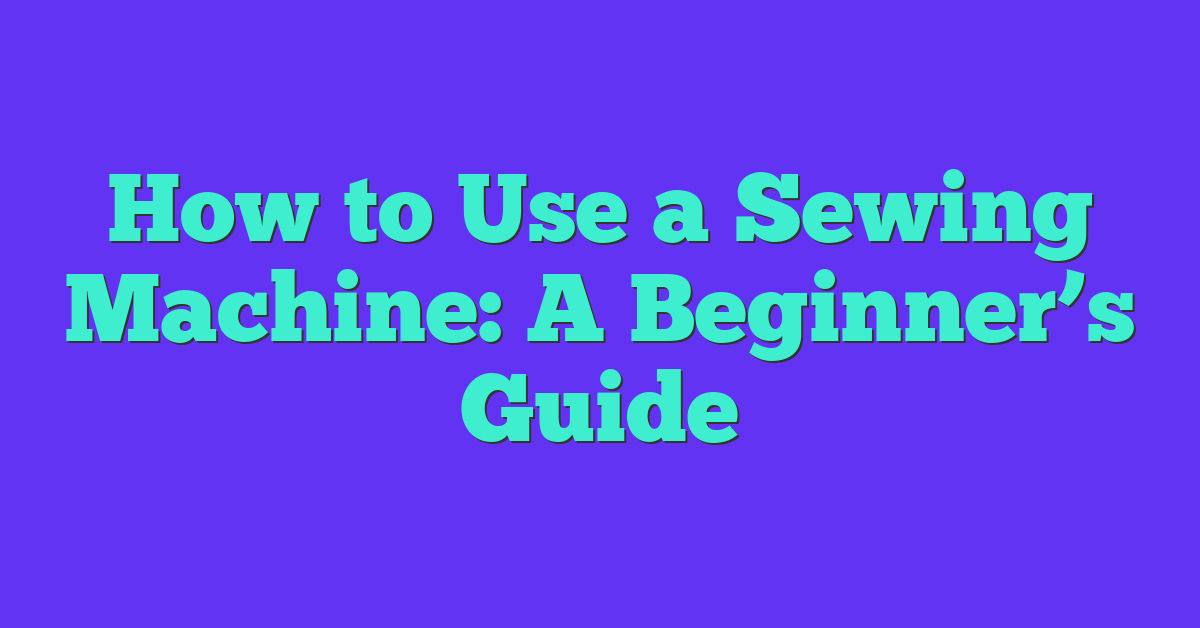Starting your sewing journey is exciting, and having the right tools makes all the difference. I remember my first time threading a needle—it felt like unlocking a whole new world of creativity. But before you dive in, it’s essential to gather the basics that will set you up for success.
From trusty scissors to a reliable measuring tape, each tool plays a vital role in bringing your projects to life. You don’t need a fancy arsenal; just the essentials to get you started and build your confidence. Let’s explore the must-have sewing tools that every beginner should have in their kit, making your crafting experience smooth and enjoyable.
Must-Have Sewing Tools
Gathering the right tools sets the foundation for your sewing projects. These essentials help you work efficiently and achieve professional results.
Sewing Machine
A reliable sewing machine simplifies your crafting process. I recommend starting with a basic model that includes essential features like:
- Stitch options: At least 10 built-in stitches for versatility.
- Adjustable settings: Control over stitch length and width.
- Automatic needle threader: Saves time and reduces frustration.
- Built-in buttonhole function: Facilitates creating clean buttonholes.
Investing in a beginner-friendly sewing machine ensures a smooth learning curve and supports various project types.
Scissors and Cutting Tools
Precision in cutting is crucial for quality sewing. My go-to cutting tools include:
- Fabric scissors: Use exclusively for fabric to maintain sharpness.
- Thread snips: Small and handy for trimming threads.
- Rotary cutter: Ideal for cutting straight lines and curves efficiently.
- Cutting mat: Protects your surfaces and provides a smooth cutting base.
Maintaining separate scissors for different materials prevents dulling and ensures accurate cuts every time.
Needles and Pins
Selecting the right needles and pins enhances your sewing accuracy. I typically keep the following on hand:
- Hand sewing needles: Various sizes for different fabric weights.
- Machine needles: Universal, ballpoint, and stretch needles for versatility.
- Pins: Straight pins and quilting pins for securing fabric layers.
- Pin cushion: Keeps pins organized and easily accessible.
Using the appropriate needles and pins for each project type improves stitch quality and prevents fabric damage.
Additional Essential Tools
Expanding your sewing toolkit ensures you’re prepared for any project. Here are some additional tools that can make your sewing experience smoother and more enjoyable.
Measuring and Marking Tools
Accurate measurements guarantee a perfect fit. I rely on the following tools:
- Tailor’s Chalk: Marks fabric without leaving permanent stains, ideal for pattern lines.
- Fabric Pens: Provide precise markings that wash out easily, useful for intricate designs.
- Ruler and Seam Gauge: Ensure consistent seam allowances and hems, essential for professional finishes.
- Clear Grid Mat: Facilitates accurate pattern placement and measurement, enhancing project precision.
Thread Variety
A diverse selection of threads enhances your sewing versatility. I include these thread types:
- Cotton Thread: Perfect for natural fabrics, offering strength and durability for everyday projects.
- Polyester Thread: Suitable for a wide range of fabrics, providing elasticity and colorfastness.
- Embroidery Floss: Ideal for detailed stitching and decorative projects, available in multiple vibrant colors.
- Specialty Threads: Incorporate metallic or variegated threads to add unique accents and textures to your creations.
| Thread Type | Best For | Features |
|---|---|---|
| Cotton Thread | Natural fabrics, quilting | Strong, durable |
| Polyester Thread | Versatile projects, stretchy fabrics | Elastic, colorfast |
| Embroidery Floss | Decorative stitching, embroidery | Multiple colors, fine texture |
| Specialty Threads | Unique accents, textured designs | Metallic, variegated options |
Having the right measuring and marking tools alongside a variety of threads allows for greater creativity and precision in your sewing projects.
Organizing Your Sewing Kit
Keeping my sewing kit organized makes every project smoother and more enjoyable. I use a few simple strategies to ensure all my tools are easy to find and in good condition.

Categorize Your Tools
First, I sort my tools by category:
- Cutting Tools: Scissors, rotary cutters, cutting mats
- Measuring Tools: Measuring tapes, rulers, clear grid mats
- Sewing Essentials: Needles, pins, thread snips
- Storage Containers: Boxes, drawers, small organizers
This separation helps me locate items quickly without any hassle.
Use Storage Solutions
I rely on various storage solutions to keep everything tidy:
- Drawer Organizers: Perfect for separating small items like pins and needles
- Toolboxes: Ideal for larger tools like scissors and rotary cutters
- Sewing Carts: Provide mobility and ample space for all my supplies
Choosing the right storage method keeps my workspace clutter-free and efficient.
Label Everything
Labeling each container and section ensures I always know where things belong. I use clear labels for:
- Containers: Pin holders, thread organizers
- Drawers: Specific categories like cutting tools or measuring tools
« Top 10 Best Beginner Sewing Kits for 2025 You Need to Start Sewing Today
Master Topstitching: What Is Topstitching and How to Do It Right Like a Pro »
Labels save me time and prevent misplacing items.
Keep Frequently Used Items Handy
I store my most-used tools in easily accessible places. Typically, this includes:
- Threads and Needles: Within arm’s reach on my main table
- Scissors and Rotary Cutters: Stored in a nearby toolbox
- Measuring Tools: Kept on a dedicated ruler rack
Having these essentials nearby speeds up my sewing process.
Regular Maintenance
I regularly check and maintain my sewing kit to keep everything in top shape. This involves:
- Cleaning Tools: Wiping down scissors and rotary cutters after use
- Inspecting Supplies: Checking thread for tangles and needles for damage
- Reorganizing: Restocking any missing items and reshuffling as needed
Consistent maintenance ensures my kit remains organized and functional.
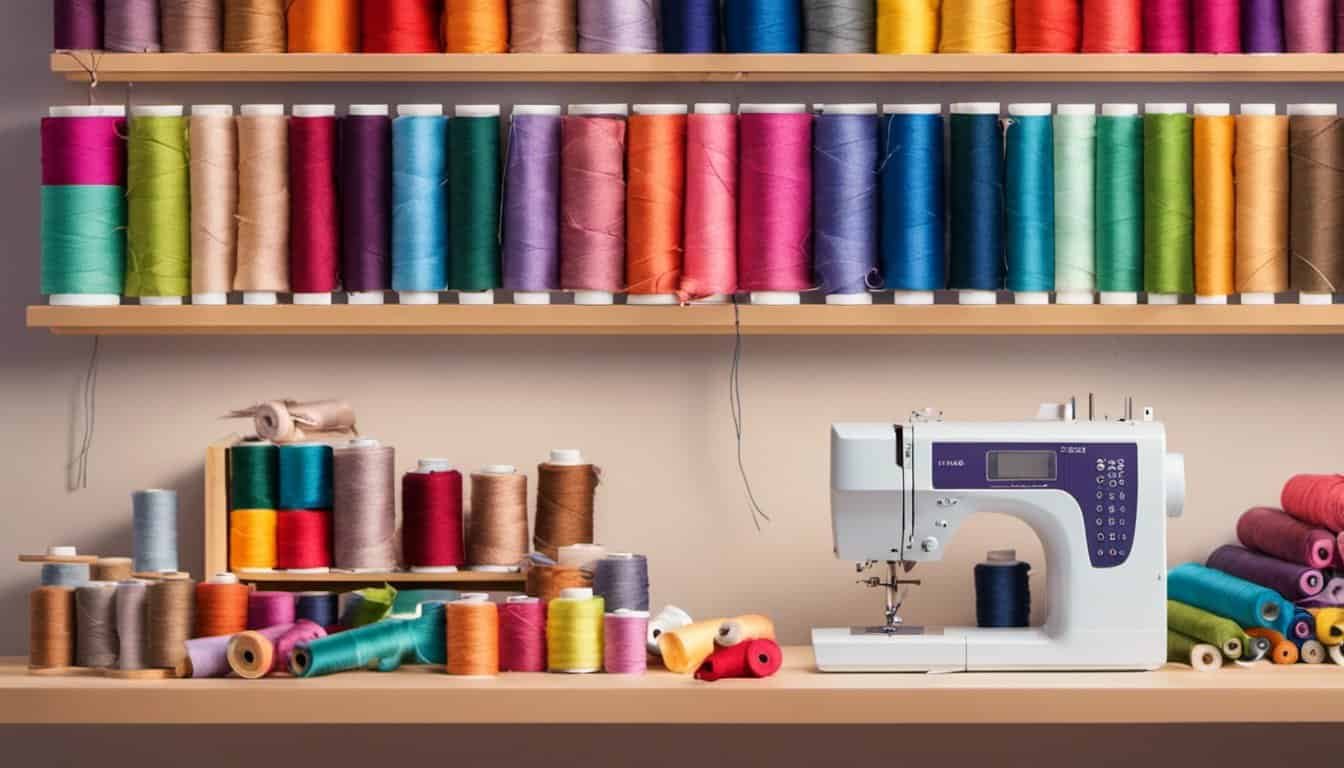
Utilize Vertical Space
To maximize my workspace, I use vertical storage options:
- Wall-Mounted Racks: Hold rulers, measuring tapes, and scissors
- Shelves: Store containers and larger tools vertically
- Pegboards: Organize hooks for easy access to frequently used items
Vertical storage keeps my desk clear and my tools within easy reach.
Personalize Your Setup
Finally, I personalize my sewing kit to fit my workflow. This might include:
- Customized Organizers: Tailored to my specific tools and preferences
- Color-Coded Systems: Using different colors for various categories
- Accessible Layout: Arranging items based on how I use them most frequently
Personalizing my setup makes sewing more enjoyable and efficient.
Tips for Choosing the Right Tools
Selecting the right sewing tools sets the foundation for enjoyable and successful projects. Here are some tips to help you make informed choices:
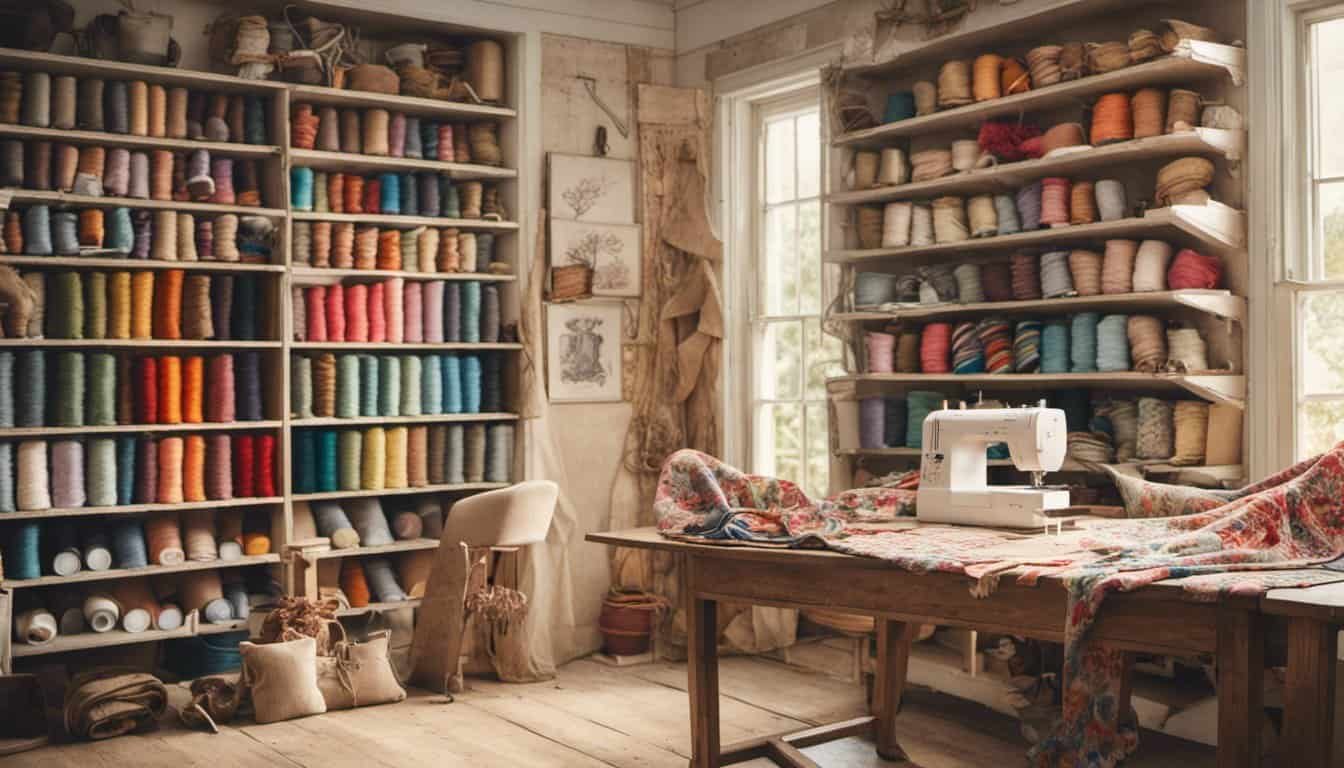
Assess Your Project Needs
Start by identifying the types of projects you plan to undertake. Whether it’s garment making, quilting, or embroidery, knowing your focus helps determine the necessary tools. For example:
- Garment Making: Invest in a versatile sewing machine, rotary cutter, and dressmaker’s rulers.
- Quilting: Opt for a wide cutting mat, quilting rulers, and specialized quilting needles.
- Embroidery: Choose embroidery hoops, stabilizers, and a variety of embroidery threads.
Prioritize Quality Over Quantity
Quality tools enhance your sewing experience and last longer. Instead of accumulating numerous low-quality items, focus on a few reliable tools:
- Scissors: Purchase sharp, durable fabric scissors and reserve them exclusively for fabrics.
- Measuring Tools: Select accurate rulers and tape measures from reputable brands to ensure precision.
- Pins and Needles: Invest in high-quality pins and a range of needles to accommodate different fabrics and techniques.
Start with Essentials and Expand Gradually
Begin with essential tools to keep your toolkit manageable. As you gain experience, add specialized tools based on your evolving needs:
- Essential Tools:
- Sewing machine
- Fabric scissors
- Measuring tape
- Pins and needles
- Thread assortment
- Additional Tools:
- Rotary cutter and cutting mat
- Seam ripper
- Tailor’s chalk
- Iron and ironing board
- Storage solutions
Consider Ergonomics and Comfort
Comfortable tools reduce fatigue and improve efficiency. Look for ergonomically designed handles on scissors and tools to ensure a comfortable grip during extended use. Lightweight tools also contribute to a more enjoyable sewing session.
Evaluate Tool Compatibility
Ensure that your tools are compatible with each other and your sewing machine. For instance, check if your scissors can handle the thickness of your fabrics or if your rotary cutter works seamlessly with your cutting mat. Compatibility minimizes frustration and enhances workflow.

Budget Wisely
Balance your budget by prioritizing essential, high-quality tools first. Allocate funds to items you use most frequently and gradually invest in additional tools as needed. Look for sales or bundled packages to maximize value without compromising quality.
Read Reviews and Seek Recommendations
Research tools by reading reviews and seeking recommendations from experienced sewists. Trusted sources and user feedback provide insights into tool performance and durability, helping you make informed decisions.
Test Before You Buy
Whenever possible, test tools in-store to assess their comfort and functionality. Handling tools firsthand allows you to determine if they meet your preferences and requirements before making a purchase.
By following these tips, you can build a well-rounded sewing toolkit that supports your creative endeavors and enhances your sewing experience.
Conclusion
Starting your sewing journey is truly exciting and having the right tools makes all the difference. Each tool you add builds your confidence and opens up new possibilities for your projects.

As you continue to explore and create, you’ll find what works best for you and your unique style. Remember to enjoy the process and celebrate each milestone along the way.
Happy sewing and may your projects be as wonderful as your imagination!







